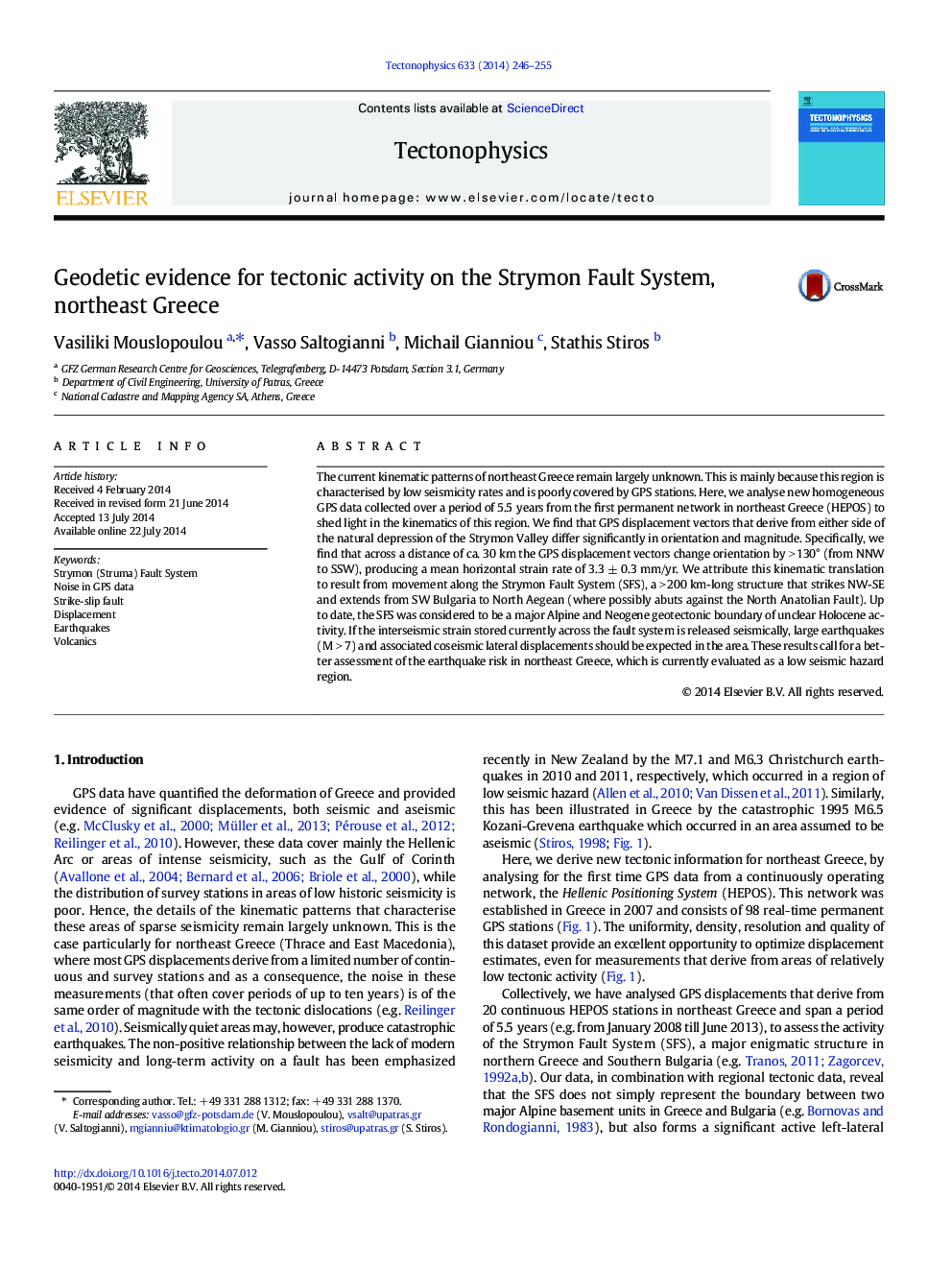| کد مقاله | کد نشریه | سال انتشار | مقاله انگلیسی | نسخه تمام متن |
|---|---|---|---|---|
| 6433813 | 1636758 | 2014 | 10 صفحه PDF | دانلود رایگان |
- The Strymon Fault System (SFS) is an active left-lateral fault.
- The SFS currently accommodates horizontal strain at a rate of 3.3 ± 0.3 mm/yr.
- SFS is capable of generating large magnitude (MÂ >Â 7) earthquakes.
- New data call for revision of the underestimated seismic hazard in the area.
The current kinematic patterns of northeast Greece remain largely unknown. This is mainly because this region is characterised by low seismicity rates and is poorly covered by GPS stations. Here, we analyse new homogeneous GPS data collected over a period of 5.5 years from the first permanent network in northeast Greece (HEPOS) to shed light in the kinematics of this region. We find that GPS displacement vectors that derive from either side of the natural depression of the Strymon Valley differ significantly in orientation and magnitude. Specifically, we find that across a distance of ca. 30 km the GPS displacement vectors change orientation by > 130° (from NNW to SSW), producing a mean horizontal strain rate of 3.3 ± 0.3 mm/yr. We attribute this kinematic translation to result from movement along the Strymon Fault System (SFS), a > 200 km-long structure that strikes NW-SE and extends from SW Bulgaria to North Aegean (where possibly abuts against the North Anatolian Fault). Up to date, the SFS was considered to be a major Alpine and Neogene geotectonic boundary of unclear Holocene activity. If the interseismic strain stored currently across the fault system is released seismically, large earthquakes (M > 7) and associated coseismic lateral displacements should be expected in the area. These results call for a better assessment of the earthquake risk in northeast Greece, which is currently evaluated as a low seismic hazard region.
Journal: Tectonophysics - Volume 633, 21 October 2014, Pages 246-255
